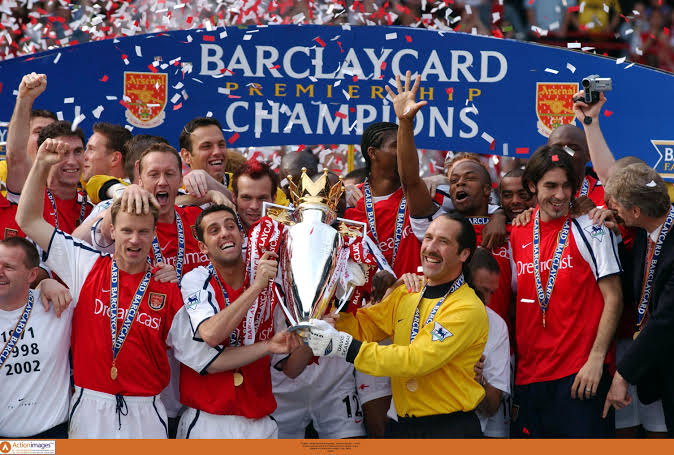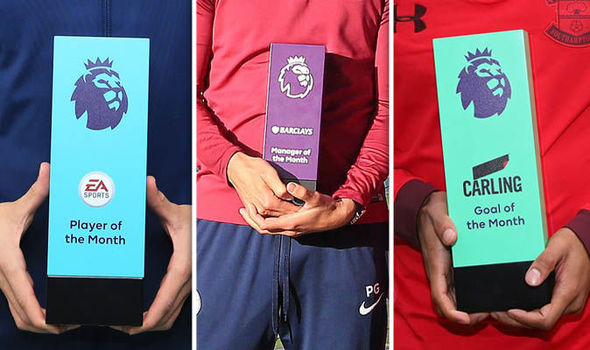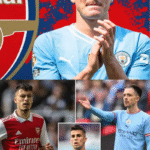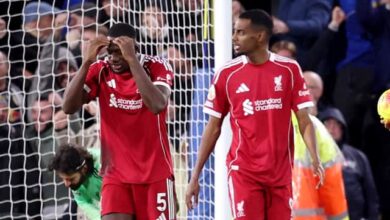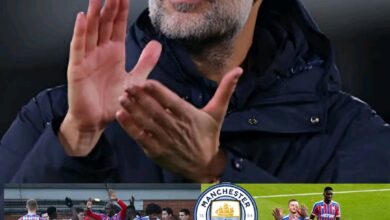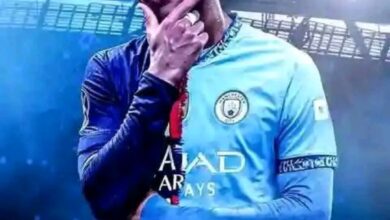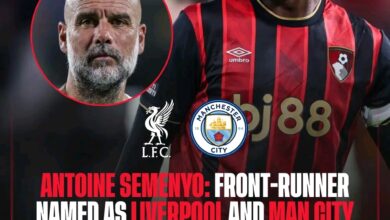Manchester City youngster has sustained an Anterior Cruciate Ligament (ACL) injury.
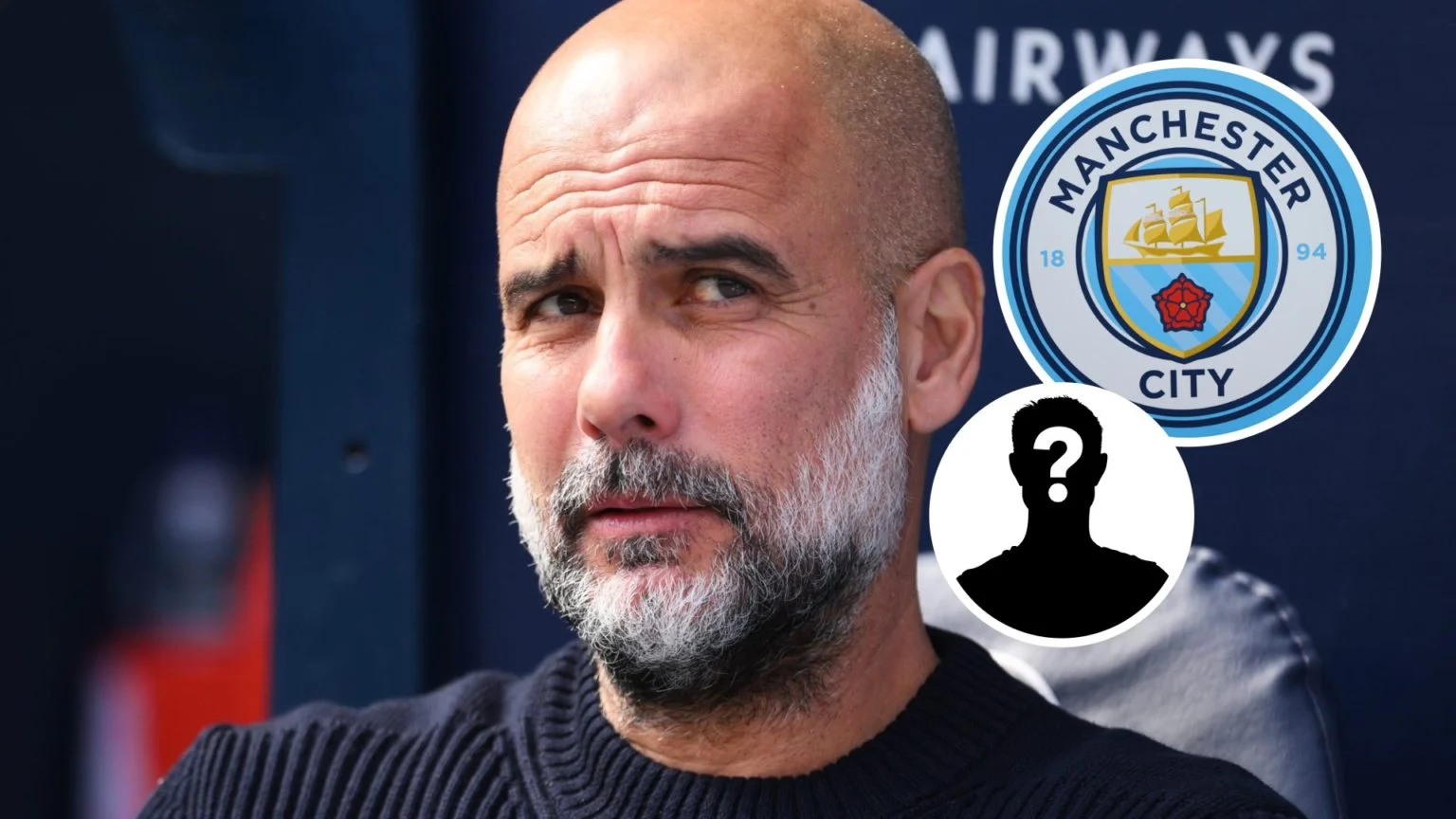
The world of women’s football was dealt another sobering reminder of the sport’s physical demands and inherent risks when Manchester City announced that promising young defender Mayzee Davies has sustained a serious Anterior Cruciate Ligament (ACL) injury. The news, which broke through an official statement on the club’s website, has sent ripples of concern throughout the football community, particularly given Davies’ age and the crucial stage of her career development.
The Injury: A Six-Minute Nightmare
The injury occurred during what should have been a proud moment for the 18-year-old Welsh international. Davies was representing her country in a UEFA Women’s Nations League fixture against Denmark in Odense, a testament to her rapid rise through the ranks of Welsh football. Having earned her place in the starting eleven, the young defender’s international debut quickly turned into a nightmare scenario that no athlete ever wants to experience.
Just six minutes into the match, Davies was forced to leave the field, her participation cut brutally short by what would later be confirmed as a complete rupture of her Anterior Cruciate Ligament. The brevity of her time on the pitch makes the injury all the more cruel – a career-defining moment reduced to a handful of minutes that will now define the next phase of her professional journey for entirely different reasons.
The sight of a young player being helped off the field so early in such an important fixture serves as a stark reminder of how quickly fortunes can change in professional football. For Davies, who had worked tirelessly to earn her place in both the Welsh national team and Manchester City’s senior setup, the timing could hardly have been worse.
Medical Assessment and Prognosis
Following her return to Manchester, Davies underwent comprehensive medical evaluation by Manchester City’s expert medical team. The club’s medical staff, renowned for their thoroughness and expertise in dealing with sports injuries, conducted detailed assessments to determine the full extent of the damage. Unfortunately, their findings confirmed the worst fears – a complete rupture of the ACL, one of the most serious injuries a footballer can sustain.
The diagnosis marks the beginning of what will be a long and challenging rehabilitation process for the teenager. Medical experts have projected that Davies will be sidelined until the latter stages of the next season, meaning she faces approximately 9-12 months away from competitive football. This timeline, while typical for ACL injuries, represents a significant portion of a young player’s career, particularly at such a crucial developmental stage.
ACL injuries have become an unfortunate epidemic in women’s football, with research suggesting that female athletes are significantly more susceptible to this type of injury than their male counterparts. The reasons for this disparity are multifaceted, involving factors such as anatomical differences, hormonal influences, and training methodologies. For young players like Davies, who are still developing physically and technically, such injuries can be particularly devastating both physically and psychologically.
Career Context and Timing
The timing of Davies’ injury is particularly cruel given her recent trajectory within Manchester City’s setup. The young defender had been making significant strides in her development, finding herself increasingly involved with the first team throughout the current season. While she had yet to make her senior debut for the club, her presence around the senior squad indicated that such an opportunity was not far away.
This proximity to first-team action makes the injury all the more frustrating for both Davies and the club. Manchester City’s coaching staff had clearly identified her as a player with significant potential, worthy of integration into their senior setup. The experience of training alongside established international players and learning from some of the world’s best defenders would have been invaluable for her development.
The defender’s inclusion in the Welsh national team setup further emphasizes the level she had reached at such a young age. International recognition at 18 years old is a significant achievement, particularly in women’s football where competition for places continues to intensify as the sport grows globally. Her call-up to the Wales squad represented not just personal achievement but also validation of her rapid development and potential.
A Winding Path to Manchester City
Davies’ journey to this point has been far from straightforward, reflecting the complex pathways that young women footballers often navigate in their pursuit of professional careers. Her story is one of determination, resilience, and the kind of character that typically serves players well during the challenging rehabilitation process that now lies ahead.
Having initially spent time in Manchester City’s youth system, Davies’ path took an interesting turn when she moved to their cross-city rivals, Manchester United. This transfer highlighted the competitive nature of youth development in Manchester, where both clubs actively seek to identify and nurture the best young talent in the region and beyond.
However, her time at Manchester United proved to be temporary, and Davies made the decision to return to Manchester City last summer. This homecoming suggested that City had maintained their belief in her potential despite her departure, and that Davies herself felt the club offered the best environment for her continued development.
Between her two spells at Manchester City, Davies made a strategic decision that demonstrated remarkable maturity for such a young player. Rather than remaining within the elite academy system, she sought out senior playing experience with Liverpool Feds, a club competing in the FA Women’s National League Northern Premier Division. This decision to step down a level temporarily in order to gain valuable senior experience speaks volumes about Davies’ understanding of what she needed to develop as a player.
Playing for Liverpool Feds would have exposed Davies to the physicality and intensity of senior women’s football, experiences that are impossible to replicate at youth level regardless of how talented the player or sophisticated the academy setup. The fact that she was willing to leave the comfortable environment of a top-tier academy to test herself in senior football demonstrates the kind of mentality that typically serves players well throughout their careers.
The Impact on Manchester City
From Manchester City’s perspective, Davies’ injury represents a significant setback to their long-term planning and development strategy. The club has invested considerable time and resources in nurturing young talent, and Davies was clearly viewed as an important part of their future plans. Her absence will not only impact her own development but also the club’s defensive options as they look to maintain their position among England’s elite clubs.
Manchester City’s women’s team has established itself as one of the premier clubs in women’s football, competing at the highest level both domestically and in European competition. The integration of young talent like Davies into their senior setup is crucial for maintaining this standard while also managing costs and building for the future. Losing a promising young player to injury for such an extended period disrupts these carefully laid plans.
The club’s coaching staff will now need to reassess their defensive options and potentially look to the transfer market or other academy graduates to fill the gap left by Davies’ absence. This situation highlights the importance of depth in modern football, where injuries can quickly expose tactical and personnel weaknesses.
The Broader Context of ACL Injuries in Women’s Football
Davies’ injury occurs against the backdrop of growing concern about the prevalence of ACL injuries in women’s football. The issue has become one of the most pressing challenges facing the sport, with high-profile players across all levels suffering similar injuries with alarming frequency. The reasons behind this epidemic are complex and multifaceted, involving everything from physiological differences to training methodologies and playing surfaces.
Research has consistently shown that female athletes are significantly more likely to suffer ACL injuries than their male counterparts, with some studies suggesting rates that are up to eight times higher in certain sports and age groups. For football specifically, the disparity is particularly pronounced, leading to increased focus on prevention strategies and rehabilitation protocols specifically designed for female athletes.
The physiological factors contributing to this increased risk include differences in hip and knee alignment, hormonal influences on ligament laxity, and variations in muscle activation patterns. These factors are particularly relevant for young players like Davies, who may still be developing the strength and coordination necessary to protect themselves from injury during high-intensity activities.
The psychological impact of ACL injuries cannot be understated, particularly for young players who may be experiencing their first major setback. The lengthy rehabilitation process, combined with the uncertainty about returning to previous performance levels, can be mentally challenging. Support systems become crucial during this period, not just from medical staff but also from coaches, teammates, and family members.
Rehabilitation and Recovery Journey
The road ahead for Davies will be long and demanding, requiring not just physical recovery but also mental resilience. Modern ACL rehabilitation has evolved significantly in recent years, with protocols now emphasizing not just the return of physical function but also the psychological aspects of recovery and return to play.
The initial phase of rehabilitation typically focuses on reducing swelling and restoring basic range of motion, followed by progressive strengthening exercises designed to rebuild the muscles around the knee joint. As recovery progresses, the focus shifts to sport-specific movements and eventually to full training activities.
Throughout this process, Davies will be supported by Manchester City’s world-class medical and fitness staff, who have experience helping players return from similar injuries. The club’s facilities and expertise in sports science will be crucial in ensuring she receives the best possible care during her recovery.
The psychological aspects of rehabilitation are equally important, particularly for young players who may be experiencing their first major injury. Working with sports psychologists and maintaining connection with teammates and coaching staff will be essential components of Davies’ recovery journey.
The Support System
Manchester City’s response to Davies’ injury will be crucial in determining not just her physical recovery but also her long-term career prospects. The club has a responsibility to provide comprehensive support during this challenging period, ensuring that she doesn’t lose ground in her development despite the extended absence from competitive football.
This support extends beyond medical care to include educational opportunities, maintaining her connection with the squad, and ensuring she remains mentally engaged with the game during her recovery. Many clubs now recognize that the period of injury recovery can actually be used constructively for other aspects of player development, including tactical understanding, leadership skills, and academic pursuits.
The Welsh Football Association will also play a role in Davies’ recovery, ensuring that her international career prospects remain intact despite this setback. The timing of the injury, occurring while on international duty, adds another layer of complexity to the situation and highlights the shared responsibility between club and country in supporting young players.
Learning and Development During Recovery
While the immediate focus will be on physical recovery, Davies’ time away from competitive football also presents opportunities for different types of learning and development. Many players use injury layoffs to deepen their understanding of the game, working closely with coaches to analyze tactical concepts and develop their football intelligence.
This period could also provide valuable perspective on the demands and challenges of professional football, potentially making Davies a stronger and more resilient player in the long term. The experience of overcoming a major injury often serves as a defining moment in an athlete’s career, building character and mental toughness that prove invaluable in future challenges.
Future Prospects and Return
When Davies does eventually return to competitive football, she will face the challenge of regaining match fitness and sharpness after an extended absence. The integration back into team training and eventually competitive matches will need to be carefully managed to minimize the risk of re-injury while allowing her to regain her previous level of performance.
The landscape of women’s football continues to evolve rapidly, and Davies’ return will be to a potentially very different environment than the one she left. The sport’s continued growth and professionalization mean that standards continue to rise, making successful rehabilitation and return to play even more challenging.
However, Davies’ young age works in her favor, as does her demonstrated determination and character. Players who successfully return from ACL injuries often speak of becoming stronger and more determined as a result of the experience, suggesting that this setback could ultimately contribute to her long-term success.
Conclusion
Mayzee Davies’ ACL injury represents more than just a personal setback for a promising young footballer; it highlights the ongoing challenges facing women’s football in terms of injury prevention and player welfare. Her journey back to competitive football will be closely watched by those within Manchester City, the Welsh national team setup, and the broader football community.
The next 9-12 months will test Davies’ resilience, determination, and mental strength in ways that competitive football never could. However, with proper support, expert medical care, and her own evident character, there is every reason to believe that she can return stronger and more determined than ever.
Her story serves as a reminder of the fragility of professional sports careers and the importance of comprehensive support systems for young athletes. It also highlights the ongoing work needed to better understand and prevent ACL injuries in women’s football, ensuring that fewer promising careers are disrupted by this devastating injury.
As Davies begins her rehabilitation journey, the football community will be hoping for a full and successful recovery, allowing her to fulfill the potential that earned her recognition at both club and international level. Her eventual return to competitive football will not just mark the end of a challenging period in her career, but potentially the beginning of an even more successful chapter, informed by the resilience and determination that such challenges inevitably develop.
